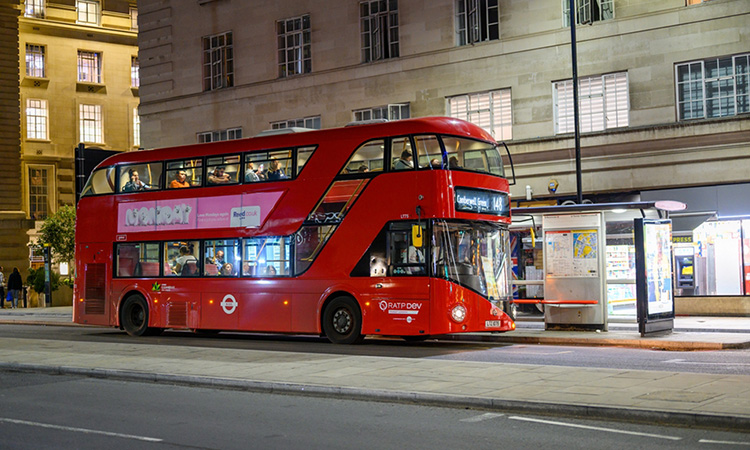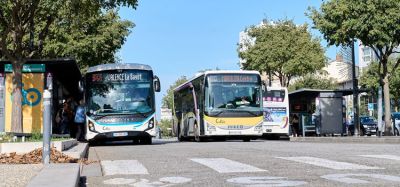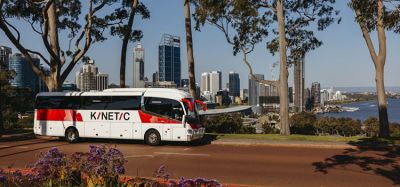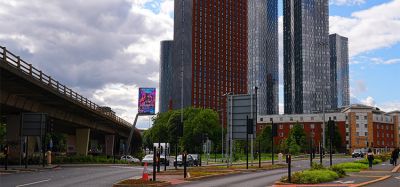TfL reduces carbon emissions with LED bus shelter lighting
- Like
- Digg
- Del
- Tumblr
- VKontakte
- Buffer
- Love This
- Odnoklassniki
- Meneame
- Blogger
- Amazon
- Yahoo Mail
- Gmail
- AOL
- Newsvine
- HackerNews
- Evernote
- MySpace
- Mail.ru
- Viadeo
- Line
- Comments
- Yummly
- SMS
- Viber
- Telegram
- Subscribe
- Skype
- Facebook Messenger
- Kakao
- LiveJournal
- Yammer
- Edgar
- Fintel
- Mix
- Instapaper
- Copy Link
Posted: 18 April 2023 | Intelligent Transport | No comments yet
In line with its goal to decarbonise its operations by 2030, TfL is further upgrading its entire network to use LED lighting, with at least 25% of Tube stations and half of bus shelters already converted.


Transport for London (TfL) has announced that it has now converted more than 50% of lighting in bus shelters across London to Light Emitting Diode (LED) lighting to reduce waste, energy consumption and associated carbon emissions.
Across London, there are around 12,100 bus shelters that have long relied on traditional lighting to keep them illuminated. However, advancements in technology have meant that TfL has been able to roll-out greener, more environmentally friendly LED lighting.
Before and after testing by TfL has shown that the new lighting uses around 57% less energy, but provides 10% brighter lighting, making the shelters both more welcoming and improving safety for customers, especially at night.
TfL expects to have converted all lighting in bus shelters, including those used in advertising panels, to LED lighting by the end of March 2024. Once complete, this will mean that TfL will have reduced associated carbon emissions by more than 1,000 tonnes CO2 annually.
In addition to bus shelters, TfL is working across its entire network to upgrade lighting to LEDs to help further reduce costs while improving customer benefits and minimising its long-term impact on the environment.
TfL data shows success in encouraging cleaner vehicles in outer London
At least a quarter of all Tube stations across London have been converted to only use LED lighting, with more planned for conversion in the coming months and years. Customer lighting at tram stops served by London Trams have been converted to LED lighting, and work is also taking place to upgrade lighting at bus stations across London, as well as at a number of Tube depots, and the London Trams depot in Croydon.
In addition, around 50% of all lamp columns on the TfL Road Network are also now LED lights, with work underway to convert more of these lamps as soon as possible.
Lilli Matson, Chief Safety, Health and Environment Officer at TfL, said: “Reducing carbon is a critical part of our work to reduce the impact of public transport on climate change. Not only does LED lighting provide a brighter, more welcoming environment at our bus stops and stations, it helps us reduce maintenance costs, and helps make London a greener and more sustainable city for us all.”
Deputy Mayor for Transport, Seb Dance, said: “The roll-out of greener, more environmentally friendly LED lighting at bus shelters across London marks another important step forward as TfL continues to decarbonise its operations in the run up to 2030. The new lighting will be clearer for customers whilst using nearly 60% less energy, reducing waste and carbon emissions, and contributing to a greener London for everyone.”
Reducing carbon is essential to limiting the impact of climate change and saving the planet. The most recent pre-pandemic figures from the Greater London Authority show that London alone produced around 31.5 million tonnes of carbon in 2019. While this is a reduction from carbon emissions in 2000, enormous challenges remain to reduce this figure to zero by the end of 2030.
If you liked this, you may also be interested in:
▶ UK government unveils measures to boost transport decarbonisation
▶ Scottish government awards £200,000 for Aberdeen bus infrastructure
Related topics
Air Quality, Passenger Experience, Public Transport, Sustainable Urban Transport
Related modes
Bus & Coach, Rail, Tube
Related cities
London
Related countries
United Kingdom
Related organisations
Transport for London (TfL)
Related people
Lilli Matson, Seb Dance








